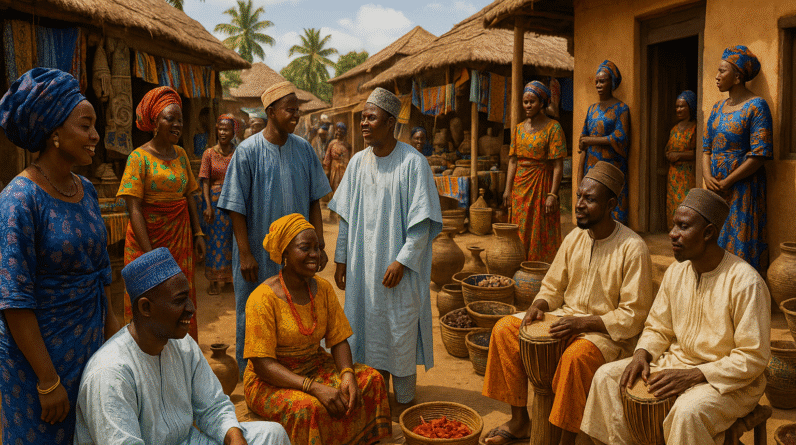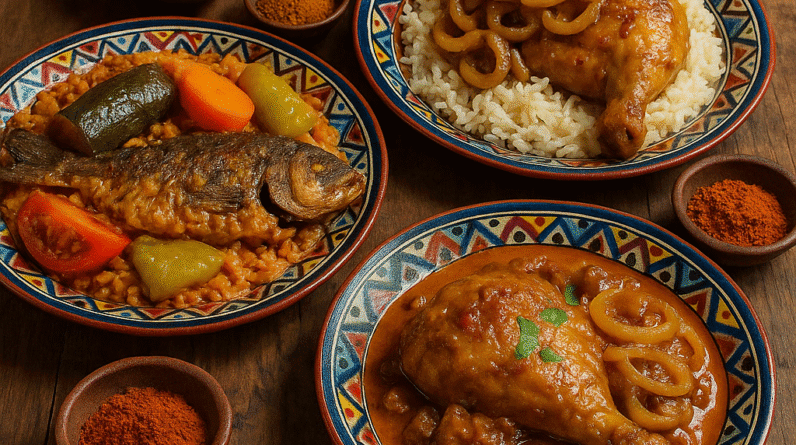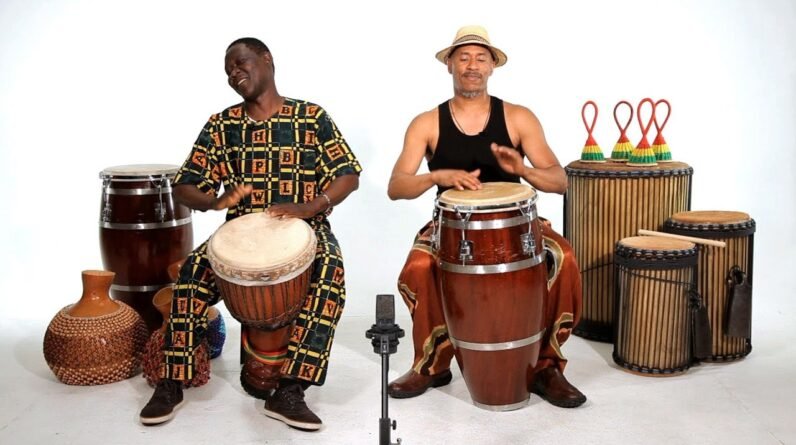
What Is The History Of Djembe Drums?
What Is The History Of Djembe Drums? You’re about to uncover the fascinating history of djembe drums, a rhythmic wonder that has been captivating audiences for centuries. Transporting you to the vibrant lands of West Africa, this article dives into the origins, cultural significance, and evolution of this iconic percussion instrument. Unlock the secrets behind the soul-stirring beats that have been passed down through generations, and embark on a rhythmic journey through time. Let’s explore the captivating history of djembe drums together.
The Origins of Djembe Drums
Introduction to Djembe Drums
The djembe drum is a fascinating instrument with a rich history that spans centuries. Originating in West Africa, this hand-played drum holds deep cultural significance and has evolved to become a beloved instrument worldwide. In this comprehensive article, we will delve into the origins, construction, cultural significance, spread, key players, impact on music and popular culture, playing techniques, and the current state of preservation and appreciation of djembe drums.
West African Roots
The roots of the djembe drum can be traced back to West Africa, particularly in countries such as Mali, Guinea, Senegal, and Ivory Coast. The drum holds a prominent place in the cultural fabric of these regions, often used to accompany dances, celebrations, and ritual ceremonies. It is believed that the djembe drum has been around for hundreds of years, serving not only as a musical instrument but also as a means of communication.
Ancient Origins
While the exact origins of the djembe drum remain somewhat elusive, it is believed to have been inspired by earlier drumming traditions in ancient Egypt and the Sudanese Empire. The design of the drum, with its distinct shape and materials, points to a long and complex history that has been handed down through generations. Ancient rock carvings and manuscripts provide evidence of drumming culture in West Africa dating back thousands of years.
Historical Significance
The djembe drum played a crucial role in African history, serving as a means of transmitting messages and stories, shaping social dynamics, and uniting communities. Its powerful rhythms and resonant tones could be heard from village to village, carrying news, spiritual messages, and cultural traditions. The drum was not just a musical instrument; it was a symbol of identity, strength, and collective spirit.
Construction and Design
Materials Used
The construction of a djembe drum involves the use of carefully selected materials that contribute to its unique sound and durability. The drumhead is traditionally made from goat skin, selected for its tone and responsiveness to hand strikes. The drum shell, or body, is crafted from a single piece of hardwood, such as lenke, djalla, or dimba. These dense woods are known for their resonance, ensuring that the drum produces a robust and vibrant sound.
Traditional Craftsmanship
Crafting a djembe drum requires skill, patience, and a deep understanding of the instrument’s construction. Master drum makers, known as djembefolas, use traditional techniques passed down through generations to shape the drum shell and attach the drumhead. The tightening system, consisting of ropes and rings, allows for fine-tuning and adjusting the tension of the drumhead, ultimately affecting the sound produced.
Shape and Dimensions
The distinctive shape of the djembe drum plays a crucial role in its sound production. The drum has a wide body and a narrow, flared top, which contributes to its punchy and resonant tones. The height and diameter of the drum can vary, but typically the drum stands around two to three feet in height and has a diameter of about a foot. These dimensions make the djembe drum easy to transport and allow for comfortable playing in various seated or standing positions.
Variations and Modifications
Over time, different regions and cultures have developed their variations and modifications of the traditional djembe drum. Some drums may feature decorative carvings, intricate patterns, or added metal rings for extra stability. While these modifications do not alter the essence of the drum, they reflect the creative interpretations and individuality of different drum makers and communities.
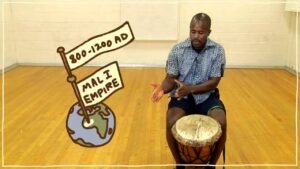
Traditional Uses and Cultural Significance
Community Gatherings
In West African communities, the djembe drum is the heartbeat of social gatherings. It serves as a unifying force, bringing people together to celebrate, share stories, and connect with one another. Whether it’s a village festival, a wedding ceremony, or a simple gathering of friends, the powerful rhythms of the djembe drum create an irresistible urge to dance, fostering a sense of joy, harmony, and belonging.
Ceremonial and Ritual Purposes
Djembe drums hold immense spiritual significance in many West African cultures. They are an integral part of ceremonial and ritual practices, where they are used to communicate with ancestors, invoke spirits, and honor deities. During these sacred moments, the djembe drum takes on a transcendent quality, guiding participants into a trance-like state and forging a profound connection between the earthly and spiritual realms.
Communication and Storytelling
In addition to its role in celebrations and rituals, the djembe drum has been historically used as a form of communication and storytelling. Messages, news, and important information were relayed through the intricate rhythms played on the drum. Skilled drummers, known as djembefolas, could communicate across vast distances through a complex system of drumming patterns. This tradition of “talking drums” allowed communities to stay connected, share news, and warn of impending dangers.
Transition into Modern Performances
As West African culture has spread throughout the globe, the djembe drum has found its place in contemporary music and performances. From traditional African music groups to fusion bands and world music ensembles, the djembe drum has become a staple instrument, prized for its versatility, expressive potential, and ability to captivate audiences. Its distinct sound and rhythmic capabilities have influenced countless musicians and enriched musical genres globally.
Spread and Evolution of Djembe Drums
Local Variations and Regional Styles
As the djembe drum traveled beyond its West African roots, it underwent adaptations and embraced different musical influences. Each region developed its unique variations and playing styles, resulting in diverse regional styles of playing the djembe drum. For example, the Malinke style from Guinea is known for its elegance and fluidity, while the Bambara style from Mali is recognized for its power and intensity.
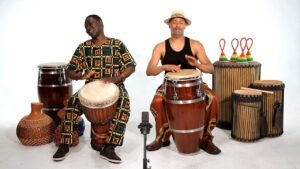
Influence on Other Instruments
The influence of the djembe drum extends beyond its own realm, inspiring the development of other percussion instruments and musical styles. Various drum sets and hand drums, such as the congas and bongos, have drawn inspiration from the djembe’s construction and playing techniques. Its rhythmic patterns and grooves have been incorporated into jazz, funk, and Latin music genres, further expanding the cultural impact of the djembe drum.
Colonial Era and Global Attention
During the colonial era, the djembe drum garnered attention from Western explorers, scholars, and artists who were captivated by its unique sound and cultural significance. Ethnographic research and recordings began to shed light on the instrument, leading to a growing interest and appreciation from a global audience. This attention, though sometimes accompanied by cultural appropriation, helped elevate the djembe drum to international recognition.
Contemporary Innovations
In recent years, contemporary innovations have emerged around the djembe drum, pushing the boundaries of traditional playing techniques and exploring new sonic possibilities. Drummers have incorporated electronic pickups and amplification systems, allowing the drum’s sound to be heard in large venues and amplified alongside other instruments. These innovations open up new avenues for exploring the expressive potential of the djembe drum in modern music.
Key Players and Influential Figures
Mamady Keïta
Mamady Keïta, often referred to as the “Ambassador of the Djembe,” is a legendary djembe virtuoso from Guinea. He has dedicated his life to mastering the art of the djembe drum and has played a pivotal role in promoting its global recognition. As a teacher, performer, and recording artist, Mamady Keïta has influenced countless drummers worldwide, sharing his knowledge and passion for the instrument.
Famoudou Konaté
Famoudou Konaté, a master drummer and respected elder from Guinea, is another influential figure in the world of djembe drums. He is known for his deep knowledge of traditional Malinke rhythms and his commitment to preserving and passing on the drumming traditions of his culture. Famoudou Konaté’s contributions to the instrument have earned him a revered status among both West African drummers and international enthusiasts.
Babatunde Olatunji
Babatunde Olatunji, a Nigerian drummer and composer, played a significant role in popularizing African drumming traditions and the djembe drum in the United States. His groundbreaking recordings and performances in the 1960s brought West African rhythms to a wider audience and played a pivotal role in the development of the world music genre.
Other Renowned Performers
While Mamady Keïta, Famoudou Konaté, and Babatunde Olatunji are recognized as influential figures, there are many other renowned performers who have made invaluable contributions to the world of djembe drums. Artists such as Adama Drame, Fadouba Oulare, and Sega Sidibe have left lasting impacts on the instrument, sharing their skills and preserving the authenticity of traditional rhythms and playing styles.
Impact on Music and Performing Arts
Traditional African Music
The impact of the djembe drum on traditional African music cannot be overstated. It serves as a rhythmic foundation, driving the energy and providing a pulse that guides dancers, instrumentalists, and vocalists alike. The djembe’s versatility allows for a wide range of rhythms and accompaniments, making it a vital element in countless musical traditions throughout West Africa.
World Music Fusion
The rise of the world music genre in the late 20th century brought the djembe drum to the attention of a global audience. Musicians from different cultural backgrounds began to collaborate, intertwining the rich rhythms of the djembe with various other instruments and musical styles. This fusion not only expanded the expressive potential of the drum but also helped bridge cultural divides, fostering a spirit of unity and cross-cultural appreciation.
Inclusion in Western Genres
The unique sound and rhythmic capabilities of the djembe drum have found their way into Western musical genres as well. From jazz and rock to reggae and hip-hop, the infectious rhythms of the djembe have been embraced by Western musicians, adding a touch of African authenticity and groove to contemporary music. The integration of the djembe drum in Western genres highlights its versatility and adaptability.
Educational and Therapeutic Applications
Beyond its musical contributions, the djembe drum has found a place in educational and therapeutic settings. Music schools and community programs around the world use the djembe drum as a tool for teaching rhythm, coordination, and cultural awareness. Additionally, drum circles and therapeutic drumming sessions incorporating the djembe drum have been praised for their positive impact on mental health, stress reduction, and overall well-being.
Djembe Drums in Popular Culture
Film and Television
Djembe drums have made appearances in several films and television shows, both in portrayals of African cultures and in broader contexts. Whether depicting a ceremonial ritual, a cultural celebration, or even an action-packed scene, the presence of the djembe drum adds authenticity, excitement, and a sense of cultural richness to these visual mediums.
Music Recordings
The infectious rhythms and captivating sounds of the djembe drum can be found in countless music recordings across various genres. From traditional African music albums to contemporary world music releases, the djembe drum has become a sought-after instrument for its ability to add depth, energy, and cultural flair to musical compositions.
Stage and Theater Productions
Stage and theater productions often incorporate the djembe drum to enhance the overall experience for audiences. Whether as part of a musical, dance performance, or theatrical production, the presence of the djembe drum on stage brings an element of authenticity and liveliness that captivates viewers. Its commanding presence and ability to evoke emotions make it a popular choice for performers and directors alike.
Visual Arts and Fashion
The influence of the djembe drum extends beyond music and performing arts into the realm of visual arts and fashion. Artists, painters, and sculptors draw inspiration from the unique shape and symbolism of the drum, integrating it into their creations. Similarly, fashion designers often incorporate drumming motifs and traditional African patterns into their clothing designs, paying homage to the cultural significance of the djembe drum.
Drumming Techniques and Playing Styles
Traditional Hand Techniques
Playing the djembe drum requires an understanding of traditional hand techniques that have been passed down through generations. Skilled drummers use a combination of open tones, slaps, and bass tones to create a wide range of sounds and rhythms. Each hand strike produces a distinct sound, allowing for intricate patterns and improvisation.
Advanced and Modern Approaches
In addition to traditional hand techniques, modern drummers have developed advanced approaches to playing the djembe drum. These include incorporating finger techniques, multiple slaps, and complex drumming patterns that fuse traditional African rhythms with contemporary influences. These advancements expand the possibilities of the instrument, pushing the boundaries of what can be achieved with the djembe drum.
Rhythmic Patterns and Grooves
The djembe drum is known for its infectious rhythms and grooves. Traditional West African rhythms such as the soli, djagbe, and kassa provide the foundation for countless drumming patterns. Each rhythm carries its own cultural significance and is often accompanied by intricate dance movements. The interplay between multiple drummers creates a mesmerizing blend of rhythms and grooves, showcasing the collective power of the djembe drum.
Improvisation and Solos
While the djembe drum is often played within a group or ensemble, it also allows for individual expression through improvisation and solos. Skilled drummers can showcase their virtuosity and creativity by exploring different rhythms, textures, and dynamics. Solos provide a platform for personal expression, allowing drummers to tell their own musical stories and captivate audiences with their technical abilities.
Preservation and Appreciation of Djembe Drums
Organizations and Institutions
Numerous organizations and institutions are dedicated to the preservation and appreciation of djembe drums and West African percussion traditions. These organizations often offer educational programs, workshops, and resources for drummers of all levels, ensuring the transmission of knowledge from experienced players to the next generations. Through their efforts, the cultural heritage of the djembe drum is safeguarded and shared with a wider audience.
Djembe Festivals and Gatherings
Djembe festivals and gatherings provide a platform for drummers, enthusiasts, and cultural enthusiasts from around the world to come together and celebrate the instrument. These events often feature performances, workshops, and cultural exchanges, allowing participants to immerse themselves in the rhythms and traditions of the djembe drum. Djembe festivals foster a sense of community and serve as a testament to the enduring popularity and global appreciation of the instrument.
Teaching and Apprenticeship
The traditional methods of learning the djembe drum involve a deep commitment to apprenticeship under experienced drummers. This mentorship-based approach ensures the transfer of knowledge, techniques, and cultural nuances from master drummers to their students. In addition to traditional apprenticeship, modern teaching methods, including online courses and instructional materials, have made the djembe drum more accessible to a wider audience.
Ethical Considerations
With the growing popularity of djembe drums worldwide, ethical considerations arise regarding the sourcing of materials and ensuring fair compensation for the communities involved in their production. Sustainable practices, fair trade initiatives, and ethical partnerships with local artisans are vital in preserving the integrity of the instrument and supporting the communities that rely on its craftsmanship.
FQAs: Frequently Asked Questions on the Topic The History of Djembe Drums
What Are the Origins of the Djembe Drum?
The djembe drum hails from the Mandingue people of West Africa, particularly in modern-day Mali, Guinea, and Côte d’Ivoire. Traditionally crafted by the Bamana, Malinke, and Susu people, the djembe has ancient roots that trace back over a thousand years. It is believed that the drum’s design and use were influenced by ancient African rituals and ceremonies, making it more than just an instrument—it’s a vessel of history and spirituality.
How Did the Djembe Drum Spread from West Africa to Other Regions?
The spread of the djembe drum beyond West Africa began in the 20th century, largely due to increased global interest in African music and culture. During the colonial period, missionaries, traders, and explorers introduced African instruments to Europe and the Americas. In the latter half of the 20th century, as global travel and cultural exchange expanded, the djembe gained popularity in world music circles. Its captivating rhythms and versatility helped it cross cultural boundaries, finding new audiences and contexts around the globe.
What Materials Are Traditionally Used to Make Djembe Drums?
Traditional djembe drums are crafted using a combination of natural materials. The drum body is typically made from a single piece of hardwood, such as Mahogany, Iroko, or Djalla, known for its durability and resonance. The drumhead is traditionally made from goat skin, which is stretched over the drum shell and secured with ropes or metal rings. The skin’s natural properties provide a rich, deep sound that is central to the djembe’s distinctive tone. In modern times, synthetic materials may also be used, but traditional methods are still highly prized for their authenticity and quality.
How Is the Djembe Drum Played and What Are Its Key Techniques?
Playing the djembe involves a variety of techniques that produce a range of sounds and rhythms. The basic strokes include the bass, tone, and slap. The bass is a deep, resonant sound produced by striking the center of the drumhead with the fingers slightly cupped. The tone is a clear, sharp sound made by hitting the edge of the drumhead with the fingertips. The slap is a sharp, percussive sound created by striking the drumhead with the fingers spread wide. Mastery of these techniques allows drummers to create complex rhythms and dynamic patterns that are fundamental to djembe music.
What Cultural Significance Does the Djembe Hold in West African Societies?
In West African cultures, the djembe drum is more than an instrument—it’s a symbol of communal identity and spiritual expression. It plays a crucial role in ceremonies such as births, weddings, and funerals, where it is used to communicate with the spiritual world and bring communities together. The rhythms played on the djembe often tell stories, convey messages, and celebrate important events. The drum is also integral to traditional dance and music, which are vital aspects of West African cultural heritage.
How Has the Design of the Djembe Drum Evolved Over Time?
The design of the djembe has evolved significantly while retaining its core elements. Historically, the drum was carved from large tree trunks, and its shape and size varied according to regional preferences. Modern djembe drums may feature more standardized shapes and sizes, often incorporating precision engineering techniques for consistency in sound quality. The use of synthetic drumheads and modern tuning systems also represents a shift from traditional practices, catering to the needs of contemporary musicians and performers.
What Role Did the Djembe Drum Play in Traditional African Ceremonies?
In traditional African ceremonies, the djembe drum is a central element, used to mark the passage of time and celebrate milestones. It accompanies rituals that honor ancestors, invoke spiritual blessings, and bring communities together. During ceremonies, the djembe’s rhythms are believed to bridge the physical and spiritual realms, creating a connection between the living and the ancestral spirits. Its role extends to storytelling, where rhythms and patterns can narrate historical events and cultural legends.
How Has the Introduction of the Djembe Drum to the Western World Influenced Its Use?
The djembe drum’s introduction to the Western world has led to a broadening of its use and appreciation. Western musicians and composers have incorporated the djembe into various music genres, including jazz, rock, and electronic music, expanding its reach beyond traditional African contexts. This exposure has led to the development of new playing techniques and fusion styles, blending the djembe’s rich cultural heritage with contemporary music trends. However, this integration has also sparked discussions about the preservation of its traditional significance and authenticity.
What Are the Main Regional Variations of the Djembe Drum in Africa?
Within Africa, regional variations of the djembe drum reflect diverse cultural influences and practices. In Mali, for instance, the djembe may be slightly deeper and narrower, producing a different tonal quality compared to drums from Guinea, which might be larger and have a more resonant sound. Each region brings its own craftsmanship techniques, decorative styles, and playing traditions, contributing to the djembe’s rich and varied legacy. These regional differences highlight the drum’s adaptability and its role as a cultural symbol across different West African communities.
How Has the Popularity of the Djembe Drum Impacted Global Music Genres?
The djembe drum’s rise in global popularity has significantly impacted various music genres. Its distinct rhythms and sounds have been adopted in genres such as world music, fusion, and even popular music, adding a unique texture to compositions. The drum’s influence is evident in the increasing presence of African-inspired beats in mainstream music, highlighting the djembe’s role in bridging cultural gaps and enhancing the global appreciation of African musical traditions. This growing recognition underscores the djembe’s importance as a dynamic and versatile instrument in the contemporary music landscape.
Conclusion: Celebrating the Legacy of the Djembe Drum
The history of the djembe drum is a testament to its enduring cultural significance and adaptability. From its origins in West Africa to its global influence, the djembe continues to be a powerful symbol of rhythm and heritage. Understanding its past not only enriches our appreciation of its music but also connects us to the broader narrative of cultural exchange and innovation.
Conclusion
From its humble beginnings in West Africa to its global recognition and impact, the djembe drum has captured the hearts and minds of people around the world. Its rich history, cultural significance, and timeless rhythms embody the shared human experience of music and celebration. As we look to the future, it is our responsibility to preserve, appreciate, and respect the djembe drum, ensuring its continued legacy for generations to come. Through education, collaboration, and cultural exchange, we can honor the ancient traditions of this remarkable instrument while embracing its evolution in contemporary music and popular culture.


